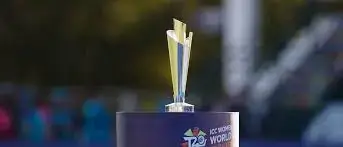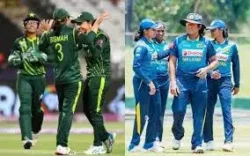Resilience and Revival: West Indies Women’s team Journey in the T20 World Cup 2024
The West Indies women’s team journey through the T20 World Cup 2024 was an emotional rollercoaster of remarkable resilience and grit in the face of adversity. They were expected to make little impact in the tournament as rank outsiders. Yet, against all odds, they delivered moments of brilliance that fascinated fans and left a lasting impression. What stands out most, though, is not just their skill but the true determination they showed, fighting not only strong opposition but also their physical limitations.
Key players, including Deandra Dottin, Hayley Matthews, and Stafanie Taylor, were all fights with injuries. Matthews’ face buried in her cap, tears streaming down, and Taylor’s eyes squeezed shut in an attempt to hold back her emotions painted a picture of the emotional and physical toll the tournament had taken. Dottin, staring into the distance, and the young Zaida James, trying to console her teammates, reflected the heartbreak of having come so close, only to falter at the final hurdle. Chinelle Henry’s swollen right eye, covered with soft cotton and ice, further emphasized the team’s struggle with injuries throughout the campaign.
West Indies women’s team began their World Cup campaign in a lowly position, labeled as underdogs, a tag they carried until their exit. But along the way, they defied expectations, displaying a unique flair that Matthews had emphasized repeatedly. They played with joy, dancing, and having fun, embodying a fearless spirit. This lighthearted approach misrepresented their determination and hunger to compete, enabling them to overcome a big 10-wicket defeat against South Africa in their opening game. From there, the team turned things around, displaying aggression in their batting and sheer resolve that encouraged them a win against a strong England team in a thrilling group-stage clash.
As the semi-final approached, however, the burden of their injuries became more evident. Matthews was nursing a sore thumb, while Zaida James had just recovered from a jaw injury and bruised hand. Taylor’s right knee was heavily strapped, and every step she took seemed to produce pain. Yet despite her condition, she continued to lead the team, gritting her teeth and playing through discomfort. The limitations imposed by her injury were most evident between overs four and eight of their chase, where they managed just 11 runs. Taylor’s inability to run forced the batters to seek boundaries, leading them to take more risks than they would have liked.
Head coach Shane Deitz acknowledged the struggle, highlighting Taylor’s courage in fighting through her injuries. “She was battling soreness and pain, and she was just battling to get through it all the time. It was amazing that she was able to come up today. She really was mind over body,” he said. Taylor’s valiant effort, while admirable, could only do so much, and her condition forced the team into a risk-heavy strategy that ultimately didn’t pay off.
Deandra Dottin, another key figure, was also playing through pain. The entire cricketing world had awaited her much-anticipated return after she briefly stepped away from the sport. She had been nursing a side strain throughout the tournament but continued to put her hand up when the team needed her most. Her four wickets in the semi-final were critical in keeping New Zealand to a chaseable 129, and her cutters and slower balls proved incredibly effective. Despite not being fully fit, Dottin’s determination to contribute was real, lifting the spirits of the entire squad.
Her work, however, was far from done. Dottin, who started her innings slowly, struggling for rhythm, decided to take matters into her own hands. With the asking rate creeping up, she began to hit her way out of trouble, relying on her immense power to muscle the ball over the boundary. The momentum shift was clear when she hit three sixes in the 16th over, including a 79-meter hit off Lea Tahuhu over the longest boundary. It was a moment that seemed to inject belief into the West Indies camp. Suddenly, it felt like they were back in the game, with Dottin leading the charge.
Yet, the physical toll on Dottin was clear. Her body had been pushed to the brink, and when she eventually top-edged a slog, it felt like the adrenaline that had kept her going had finally run out. The West Indies team, needing 33 off 21 balls, still had a chance, but it was evident that their fight was slipping away. They fell short by just eight runs, a margin they could have easily overcome on another day if not for the injury-riddled performance they were forced to endure.
The mood in the West Indies dressing room after the game was one of disappointment, but also pride. Despite their pain, both emotional and physical, they had fought until the very end, showing massive character. The long flight home will undoubtedly be difficult, filled with thoughts of what could have been. However, they can hold their heads high, knowing that they performed beyond expectations in the UAE.
West Indies’ performance in this tournament showed glimpses of revival, with Matthews, Dottin, and Taylor leading the way. But as Deitz pointed out, the team needs more than just its star players to build on this momentum. The Women’s CPL is a step in the right direction, but systemic challenges remain, and there is much work to be done to ensure that this talented group of players can continue to develop and thrive on the world stage.
Their campaign, though ultimately unsuccessful, was filled with moments of brilliance that sparked conversations about the potential of West Indies women’s cricket. They may not have won the trophy, but they won hearts with their passion, flair, and commitment. Now, as they look ahead to future tournaments, the challenge will be to harness that spirit and build a team that can consistently compete with the best in the world. For the West Indies Women’s team, hurt can indeed turn to hope, and this T20 World Cup 2024 campaign may well be the beginning of a new chapter in their cricketing journey.



